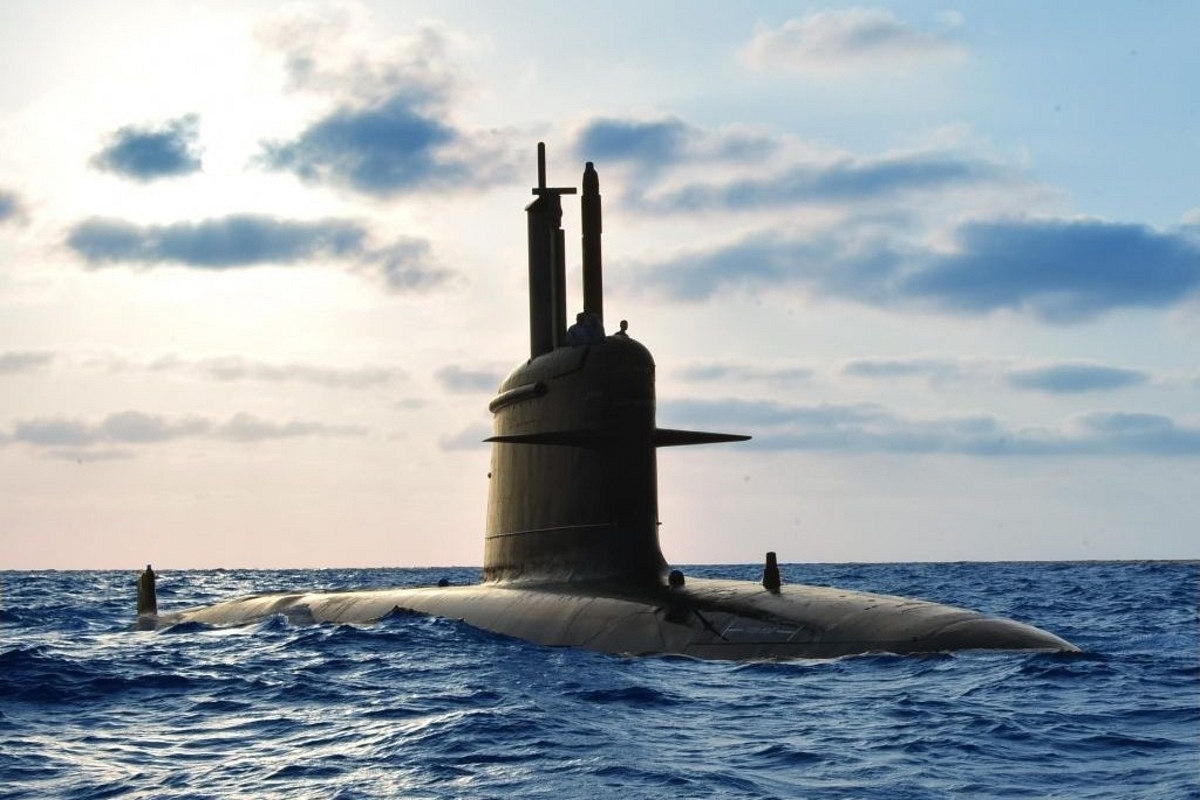Defence
India's Submarine Building Capacity To Remain Idle As Last Kalvari-Class Boat Goes To Trials Without New Project In Sight

An Scorpene-class submarine of the Indian Navy.
INS Vaghsheer, the sixth and final boat of the Kalvari-class or Scorpene-class, has commenced sea trials. The submarine is scheduled to be delivered to the Indian Navy by the end of this year.
This will mark the completion of the $3.5 billion Project-75, which started in 2005 after India signed a deal with the French defense major Naval Group to manufacture six submarines in India with technology transfer.
However, with INS Vaghsheer entering the sea trials phase, the production line at the Mazagaon Dockyard, where these boats were built, has once again become empty, with no new orders in sight.
Although there are rumors that the Navy might be planning to buy three additional Scorpene submarines, a final contract has yet to be signed.
Moreover, Project-75I (India), the program for building submarines equipped with Air-Independent Propulsion (AIP) technology, has remained stalled for years, experiencing repeated delays. The Ministry of Defense has granted an extension for bid submissions for the project.
The delays are due to the stringent requirements of the liability clause and the need for the bidder to have an in-service AIP system.
Currently, only the German Shipyard Thyssenkrupp Marine Systems (TKMS) possesses an in-service AIP system, installed in the U-212 submarines of the German and Italian Navies. This single-vendor situation significantly diminishes the prospects of the Project-75I moving forward.
Consequently, the infrastructure and industrial capacity developed for the Kalvari-class submarine project, as well as the knowledge gained from constructing the six boats, are likely to remain unused.
This mirrors the past situation when the production line became empty after the construction of only two boats of the Shishumar-class.
In 1981, India signed a deal with the German government to purchase four U-209 submarines, with two submarines bought off the shelf and the other two built by MDL with technology transfer.
Later, an agreement to build another two submarines was signed but was subsequently cancelled. After completing the construction of the two submarines, the MDL production line became empty.
The technological expertise gained during the project was lost since no further submarines were built.
Furthermore, India imported ten Russian Kilo-class submarines off-the-shelf, also known as the Sindhughosh-class in the Indian service.
The idling of the production line is occuring despite the Indian Navy experiencing a decline in the number of submarines.
Sindhughosh-class submarines, which form the backbone of the Navy's under-sea fleet, have begun to retire from service. As more Sindhughosh-class boats retire and the Shishumar-class submarines age, the situation will worsen. The oldest Shishumar-class boat, 'INS Shishumar', is 37 years old, and the youngest, 'INS Shankul', is nearly 29 years old.
The strategic picture, however, appears even worse.
China is commissioning aircraft carriers, warships, and submarines in large numbers, and experts believe that by the end of this decade, the Chinese will start sending their aircraft carriers to the Indian Ocean Region for force projection. They already deploy both conventional and nuclear-powered submarines in the Indian Ocean.
Earlier this month, the Indian Navy Chief, Admiral R Hari Kumar, revealed that the Chinese have three to six warships in the IOR at any given time.
China is also assisting the Pakistani Navy in increasing its capabilities. The Pakistan Navy already operates three French-made Agosta-90B AIP-equipped submarines and is set to receive eight more AIP-equipped Chinese Yuan-class submarines by the end of this decade.
On the other hand, the Indian Navy currently does not operate any AIP-equipped submarines. INS Kalvari, the lead boat of the Kalvari-class submarines, will receive AIP only after undergoing its first refit, which is scheduled to take place sometime this decade.
The failure to capitalize on the infrastructure, technology, and industrial capacity developed for the Kalvari-class submarines will have dire consequences for India's ability to design and build conventional submarines indigenously.
Introducing ElectionsHQ + 50 Ground Reports Project
The 2024 elections might seem easy to guess, but there are some important questions that shouldn't be missed.
Do freebies still sway voters? Do people prioritise infrastructure when voting? How will Punjab vote?
The answers to these questions provide great insights into where we, as a country, are headed in the years to come.
Swarajya is starting a project with an aim to do 50 solid ground stories and a smart commentary service on WhatsApp, a one-of-a-kind. We'd love your support during this election season.
Click below to contribute.
Latest